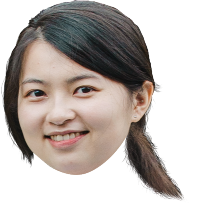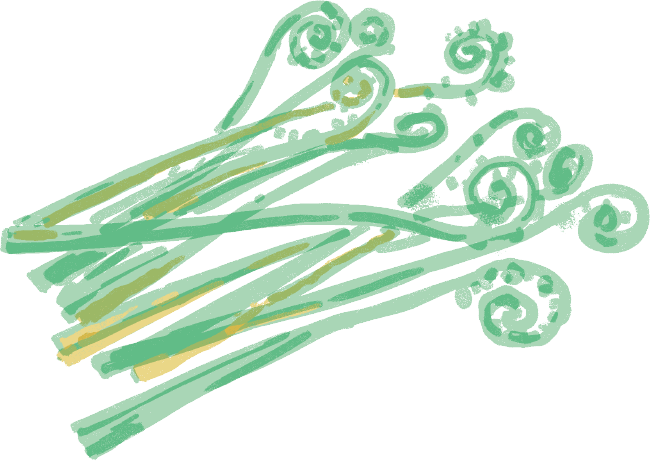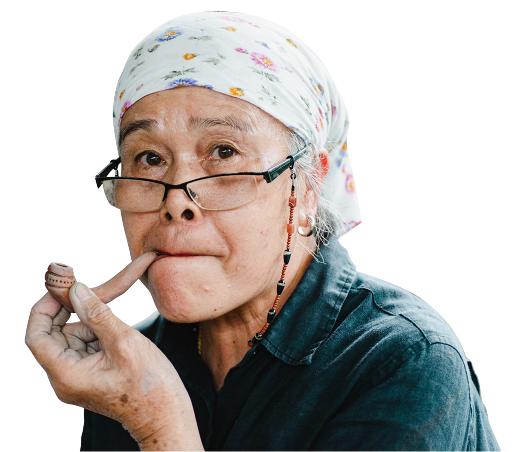What observations have you made making different potteries in the last two days?
 The main difference is I learned to use my hand to make a concave body today. Yesterday, I made the ritual cup by first rolling out a sheet of clay and a base, and gradually shaping the cup with the combination. But today, I started with a clay ball and slowly dug the indentation so that the pottery is firmer in shape. This method using the hands may seem easy, but control of the “moisture” and “temperature” is very important. I panicked a little during the process because the clay keeps cracking, and I think that it is due to a lack of moisture. The other thing is the temperature, with constant contact with the air, the surface becomes dry while the interior is still wet, so the exterior cracks very frequently. To make sure the speed of drying is consistent inside and out, you have to hold the piece in your palm and use the temperature of your hands to evaporate the moisture within. And lastly, it’s the concept of “resting”. Shaping clay is not something that can be completed with a snap of fingers, it takes proper resting for the bottom to become firm. With a steady foundation, the pottery is thus able to stand shaping upwards.
The main difference is I learned to use my hand to make a concave body today. Yesterday, I made the ritual cup by first rolling out a sheet of clay and a base, and gradually shaping the cup with the combination. But today, I started with a clay ball and slowly dug the indentation so that the pottery is firmer in shape. This method using the hands may seem easy, but control of the “moisture” and “temperature” is very important. I panicked a little during the process because the clay keeps cracking, and I think that it is due to a lack of moisture. The other thing is the temperature, with constant contact with the air, the surface becomes dry while the interior is still wet, so the exterior cracks very frequently. To make sure the speed of drying is consistent inside and out, you have to hold the piece in your palm and use the temperature of your hands to evaporate the moisture within. And lastly, it’s the concept of “resting”. Shaping clay is not something that can be completed with a snap of fingers, it takes proper resting for the bottom to become firm. With a steady foundation, the pottery is thus able to stand shaping upwards.
Is gathering with Afo’ and her family for a drink and chat tonight a scenario common to your own indigenous community as well?
 Yes, like when I interview elders in the community, I always bring wine, it’s a like simple ritual to ask elders to share their wisdom with me. I often bring the rice wine that costs NTD 45. We drink every time I return to my community, I think. When there is wine, there is a lot to talk about, and we like to call it a “post-meeting”.
Yes, like when I interview elders in the community, I always bring wine, it’s a like simple ritual to ask elders to share their wisdom with me. I often bring the rice wine that costs NTD 45. We drink every time I return to my community, I think. When there is wine, there is a lot to talk about, and we like to call it a “post-meeting”.
How has this trip influenced you regarding searching for the pottery-making culture in your community?
 I may share with elders in my community my experiences here, then discuss possible future actions with some friends. I may have learned pottery-making methods this time, but SaySiyat pottery-making seems non-existent so far despite having heard of anecdotes from elders and the fact that we do have relevant terms in our language. So this feels to me like a tradition, yet also something brand new. When I go home and face cultural affairs as such, I have to be very careful. This is a road I have recovered with much effort, I only have this one community. It is also my responsibility to my indigenous community.
I may share with elders in my community my experiences here, then discuss possible future actions with some friends. I may have learned pottery-making methods this time, but SaySiyat pottery-making seems non-existent so far despite having heard of anecdotes from elders and the fact that we do have relevant terms in our language. So this feels to me like a tradition, yet also something brand new. When I go home and face cultural affairs as such, I have to be very careful. This is a road I have recovered with much effort, I only have this one community. It is also my responsibility to my indigenous community.
There were lots of talks shared just between you and Afo’ while making potteries, anything you would like to share with our readers?
 Afo’ gave me some tips about romantic relationships. For example, when you choose a man as a husband and become a wife yourself, there are certain grounds we need to stand firm on. Afo’ shared with me her experience, “you have to find your own faith.” This is faith in a broad sense, which can include religion, ancestors, or believing in the person you talk to or the things you want to do.
Afo’ gave me some tips about romantic relationships. For example, when you choose a man as a husband and become a wife yourself, there are certain grounds we need to stand firm on. Afo’ shared with me her experience, “you have to find your own faith.” This is faith in a broad sense, which can include religion, ancestors, or believing in the person you talk to or the things you want to do.
Are you excited about the wild vegetable gathering tomorrow?
 Very much so. I have very little knowledge of wild vegetables, and I would like to know how the Pangcah, being the people of wild vegetables, observes plants. Unlike the Pangcah, able to recognize all kinds of plants, the SaySiyat eat just a few, for example, a kind of fern called baehko’, the Diplazium Viridissimum. We usually put it in the soup or blanch it and make a salad. It tastes just like the Vegetable Fern, but tougher in terms of fiber. We also have plenty of Yellow Rotang Palm in our mountains. I have heard my Atayal friends say that it is edible, but I don’t know how to eat it. My only impression of this rattan is the pain because I have been pricked by it before, haha.
Very much so. I have very little knowledge of wild vegetables, and I would like to know how the Pangcah, being the people of wild vegetables, observes plants. Unlike the Pangcah, able to recognize all kinds of plants, the SaySiyat eat just a few, for example, a kind of fern called baehko’, the Diplazium Viridissimum. We usually put it in the soup or blanch it and make a salad. It tastes just like the Vegetable Fern, but tougher in terms of fiber. We also have plenty of Yellow Rotang Palm in our mountains. I have heard my Atayal friends say that it is edible, but I don’t know how to eat it. My only impression of this rattan is the pain because I have been pricked by it before, haha.

baehko'

Afo’ & Foday Facing Difficulty in Passing On the Pangcah Pottery
Established in 2002, the studio aims to pass on the Pangcah Pottery to future generations. However, over the years, Afo’ has met only one student who really wanted to learn, but that student was unable to spend much time making pottery because of young children at home. Most of the younger generation in the community just to try their hands at it, that’s all.
Art Taking Root in Hualien is a project the studio is working on, commissioned by the Cultural Affairs Bureau of Hualien. The project aims to promote Pangcah Pottery to people outside the indigenous community, with students coming from all over Taiwan and some even flying in from Penghu to learn. Starting next year, the studio plans to take the courses outside Hualien. The short-term goal is to introduce Pangcah Pottery to everyone and recover the traditional culture of firing by burning grass in the ground. The long-term goal is to have Tafalong Pottery-Making registered as an intangible cultural asset and continue sharing it with society.




